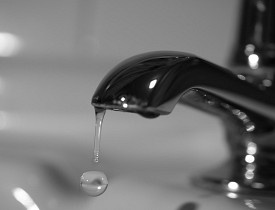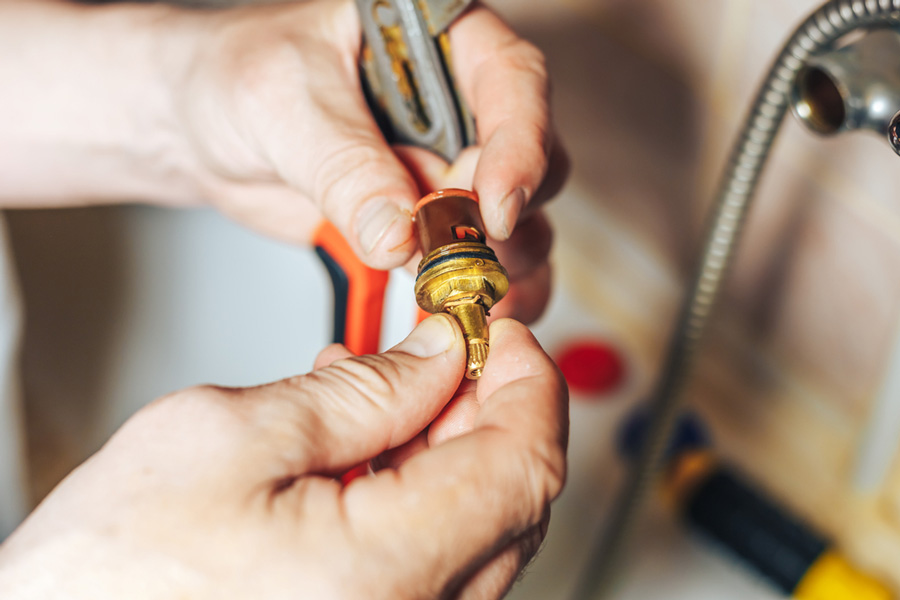Learning the Significance of Resolving a Malfunctioning Faucet
Learning the Significance of Resolving a Malfunctioning Faucet
Blog Article
Everybody is bound to have their own piece of advice when it comes to Why It's Important to Fix Leaky Faucets.

Leaking taps could seem like a minor aggravation, but their impact goes beyond just the inconvenience of the noise. From drainage to sustaining unnecessary economic prices and health dangers, disregarding a dripping faucet can result in various repercussions. In this short article, we'll explore why it's vital to resolve this common household concern without delay and efficiently.
Waste of Water
Environmental Effect
Trickling faucets add considerably to water waste. According to the Environmental Protection Agency (EPA), a solitary tap dripping at one drip per second can lose more than 3,000 gallons of water per year. This not just strains water resources yet additionally affects ecosystems and wildlife depending on them.
Step-by-Step Overview to Taking Care Of a Dripping Faucet
Devices Required
Before attempting to take care of a dripping tap, gather the needed tools, consisting of a flexible wrench, screwdrivers, replacement parts (such as washers or cartridges), and plumber's tape.
Usual Tap Issues and Their Solutions
Recognize the kind of faucet and the particular problem triggering the drip. Common problems include worn-out washers, corroded valve seats, or malfunctioning O-rings. Refer to maker directions or online tutorials for step-by-step guidance on repairs.
Financial Expenses
Raised Water Costs
Beyond the environmental impact, leaking faucets can inflate water expenses considerably. The accumulated wastage over time converts right into greater energy costs, which might have been avoided with timely fixings.
Potential Property Damage
Additionally, long term leaking can result in harm to fixtures and surface areas surrounding the faucet. Water accumulation can cause staining, deterioration, and also structural problems if left neglected, causing additional repair prices.
Health and wellness Concerns
Mold and Mildew Growth
The constant visibility of wetness from a trickling tap produces a suitable environment for mold and mildew development. These fungi not only jeopardize interior air quality however additionally position health and wellness risks, specifically for people with respiratory system problems or allergies.
Waterborne Illness
Stationary water in trickling faucets can end up being a breeding place for germs and other pathogens, raising the threat of waterborne conditions. Pollutants such as Legionella bacteria grow in stagnant water, potentially resulting in serious diseases when consumed or inhaled.
DIY vs. Professional Repair work
Benefits and drawbacks of Do It Yourself Repair
While some might try to deal with a trickling faucet themselves, DIY repair services include their own set of obstacles. Without appropriate knowledge and devices, DIY attempts can aggravate the issue or bring about insufficient repairs, prolonging the problem.
Benefits of Working With a Professional Plumber
Working with a specialist plumber makes certain that the underlying source of the leaking faucet is dealt with effectively. Plumbing technicians have the competence and equipment to identify and repair faucet concerns efficiently, conserving time and reducing the threat of further damages.
Environmental Responsibility
Specific Contribution to Conservation
Taking duty for dealing with dripping taps aligns with broader initiatives toward water preservation and environmental sustainability. Every individual's activities collectively make a significant effect on protecting priceless resources.
Sustainable Living Practices
By prioritizing punctual fixings and taking on water-saving habits, individuals add to lasting living techniques that profit both existing and future generations.
Safety nets
Normal Maintenance Tips
To prevent dripping faucets, execute routine maintenance such as cleaning aerators, examining for leaks, and replacing damaged parts quickly. Furthermore, think about setting up water-saving gadgets or updating to extra efficient fixtures.
Value of Prompt Repairs
Attending to trickling taps as soon as they're discovered stops more water wastage and potential damages, ultimately saving both water and money over time.
Impact on Building Value
Understanding of Well-Maintained Residential Property
Keeping a building in good condition, consisting of dealing with maintenance problems like dripping faucets, improves its viewed worth and worth among prospective customers or lessees.
Influence on Resale Value
Characteristics with well-kept plumbing fixtures, including taps, command greater resale worths in the real estate market. Dealing with trickling taps can add to a positive perception throughout property inspections and settlements.
Conclusion
Dealing with a trickling tap exceeds plain benefit; it's an important action towards preserving water, reducing financial costs, and safeguarding wellness and home. Whether via DIY repairs or expert support, taking action to take care of leaking faucets is a small yet impactful way to advertise responsible stewardship of sources and contribute to a healthier, a lot more lasting future.
How to Fix a Dripping or Leaky Faucet
A leaking faucet is one of the most common problems that homeowners encounter, but it being commonplace doesn’t make it any less annoying. The constant drip drip drip of a leaking bathtub faucet, showerhead, or sink tap can disturb your home’s serenity. Left neglected, a dripping faucet can also result in higher water bills and discoloration or mold growth in your sink or plumbing fixtures.
Fortunately, you don’t have to be a trained plumber to know how to stop a dripping faucet. With some basic tools, replacement parts, and a little patience, leaky faucet repair is a breeze. In this article, we’ll explain what causes dripping faucets and how you can fix them.
What Causes a Leaking Faucet?
Kitchen and bathroom faucets come in all manner of designs, but most involve some combination of valves, O-rings, seals, and washers. The O-ring is usually the weakest link, but any one of these pieces can wear down over time. Heat, moisture, temperature fluctuations, minerals, mold, and movement can contribute to warping and corrosion, breaking the watertight seal. This just comes with the territory of being a homeowner. Everything is always subject to wear and tear, and some component parts of your appliances and fixtures need to be replaced on occasion. At least replacement O-rings are cheap!
More rarely, dripping faucets can be a symptom of excessively high water pressure. Were this the case in your home, you would probably notice that the leak is not isolated to one faucet. Water pressure issues are harder to resolve on your own. We recommend contacting a professional plumber if you suspect your water pressure is too high.
How to Fix a Dripping Faucet
Pipe wrench or monkey wrench Allen wrench set Screwdrivers Old towel or rag Shut off the water.
Before you do anything, you need to turn off the water to keep from drenching your kitchen or bathroom. You should find a valve under the sink and against the wall. Once you’ve turned this valve, try turning the faucet on to confirm that the water source has been cut off.
If you can’t locate your local valve for the faucet you’re working on, you can always shut off the water to the house at the main valve. Of course, this will prohibit anyone from using the sinks, showers, or toilets while you’re working on the faucet that’s giving you trouble.
Plug or block the drain.
You’ll be disassembling the faucet and removing some small bits of hardware. Plug the drain with a stopper or rag to avoid the possibility of a small screw falling into your P-trap.
Take apart the faucet assembly.
There are several varieties of kitchen and bathroom faucets, each with its own manner of assembly. For detailed instructions on how to disassemble your faucet, you can refer to the fixture’s manual or contact the manufacturer. If you know whether you have a ball, disc, cartridge, or compression faucet, you can find detailed schematics online.
In general, you need to begin by removing the faucet handles. You might notice a small screw that you’ll need to remove with a screwdriver or Allen wrench. If you don’t see any visible securing hardware, it’s likely hidden under a decorative cap that can be unscrewed or popped off with flathead screwdriver.
Remove each piece methodically, consulting a schematic when necessary. Take notes or arrange the pieces in such a way to make it easier to correctly reassemble the faucet later.
Remove the cartridge.
Once you’ve removed the handles and securing hardware, you should be able to remove the valve cartridge or stem. Some cartridges will slide right out. Other faucet models will require you to loosen a nut with a pipe wrench before you can remove the valve stem.
Examine the exposed hardware.
With the cartridge or stem removed, inspect the component parts. Check the rubber O-rings for wear and tear. Also examine the seat washer for corrosion or other damage. These pieces are usually the responsible parties for a dripping faucet, but it’s worth inspecting the other component parts while you have the faucet disassembled.
Find replacement parts.
Once you’ve identified which faucet component has failed, find an identical replacement. Your local hardware store should have O-rings, seat washers, and other standard components in stock. If you have a luxury or uncommon faucet, you may have to contact the manufacturer for a replacement part.
It’s a good idea to take your old parts with you to the hardware store so you can compare them with the store’s inventory and be sure you’re purchasing the correct replacement.
Reassemble the faucet.
With your new parts in hand, reconstruct the faucet and handles. Don’t be tempted to overtighten screws or nuts. You might think this could create a better seal, but it can instead damage or bend a delicate part of the assembly and create a new problem for you.
Turn on the water and test the faucet.
The only thing left to do is test your work. Unplug the sink, turn the water back on, and try the faucet. Congratulate yourself on a job well done!
https://www.libertyhomeguard.com/how-to-fix-a-dripping-or-leaky-faucet/

Do you appreciate reading up on 4 Common Reasons for a Leaky Faucet? Place feedback further down. We would be delighted to listen to your ideas about this blog post. We are looking forward to see you back again in the future. Liked our blog entry? Please share it. Let another person locate it. We value your readership.
Report this page